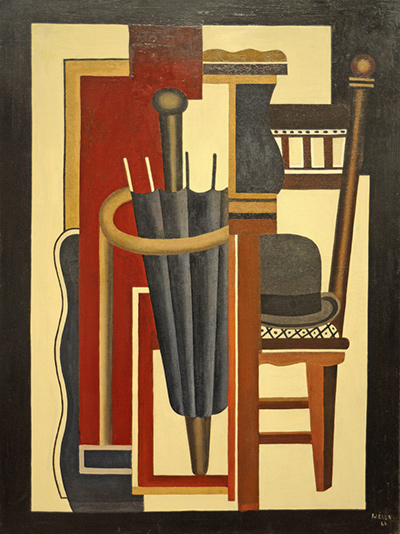In Fernand Leger's painting Umbrella and Bowler, the viewer is confronted with two of the key symbols of industrious respectability: the black umbrella and the bowler hat.
This, the 'uniform' of the middle classes of the early 20th century is taken and considered in isolation in this picture. We see these objects in repose, drawn with strong, bold lines and colours that lend them an abstract quality.
This abstract feel to the painting arguably services to underscore the fact that at the time that this picture was painted (i.e. in 1926), umbrellas and bowler hats were not just items of clothing. They were also symbols of class status, of masculinity and of adherence to certain social codes.
Born in France, Leger was both a painter and a sculptor, and we can certainly detect a sculptor's eye for the strength of shape and form in paintings like Umbrella and Bowler, even though Umbrella and Bowler was painted with oil and canvas rather than being sculpted.
Though at times, Leger's paintings were somewhat Cubist in style (one example of this is his famous work Nudes in the Forest), the strong and bold lines of works such as Umbrella and Bowler have a more simple and accessible feel.
For this reason, Leger is sometimes considered to be a forerunner of the Pop Art movement in the US and the UK in the 1960s. This movement took popular cultural motifs and turned them into vivid and eye catching designs with an almost cartoonish flair to them.
One interesting fact about Leger's priorities around the time that he painted Fernand Leger Article is the fact that at this time he was considering giving up painting altogether and becoming a filmmaker instead.
It is fascinating that an image that seems so solid and static as Fernand Leger Article could have been created by an artist who had a deep fascination with the moving image.




